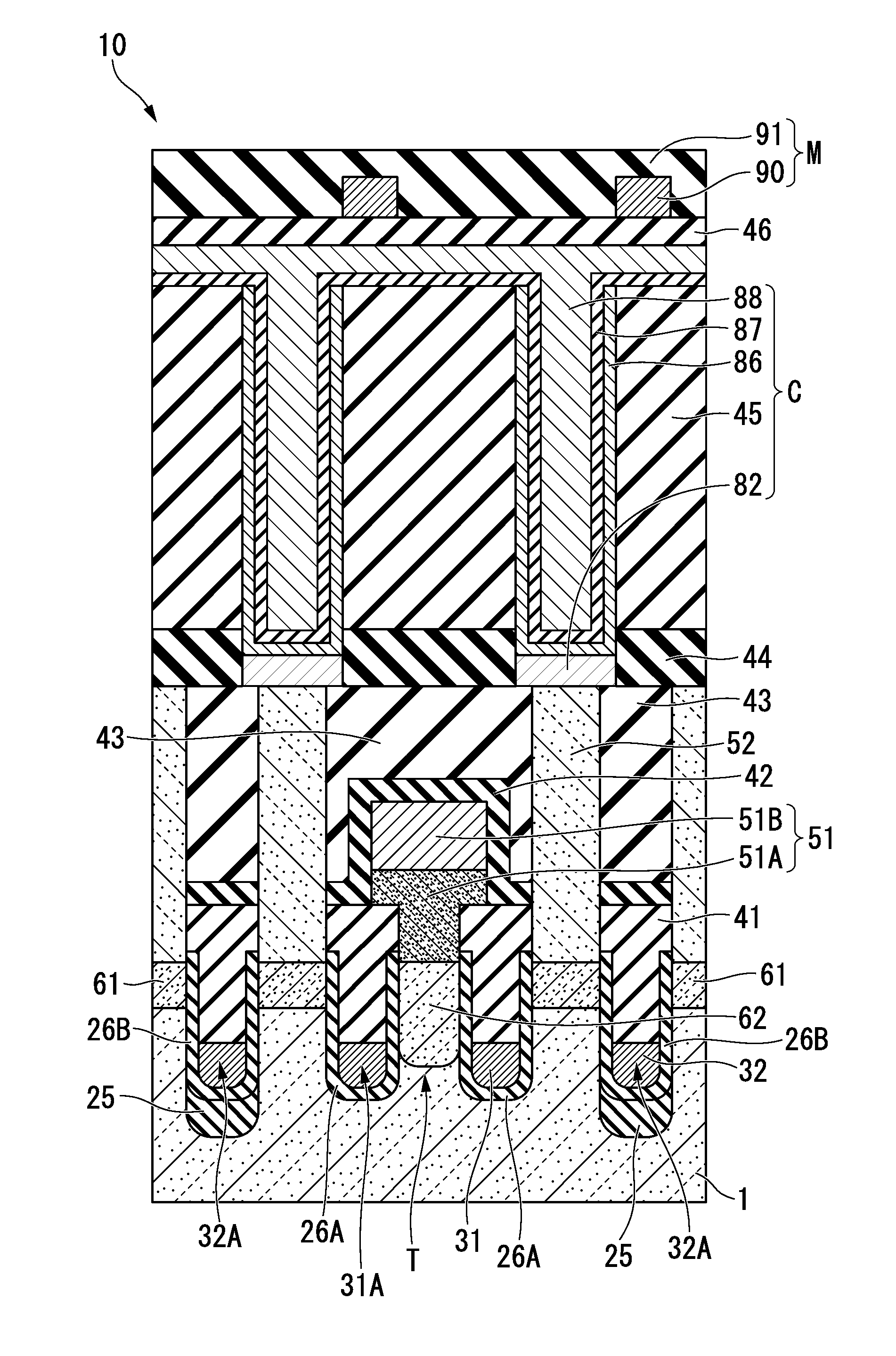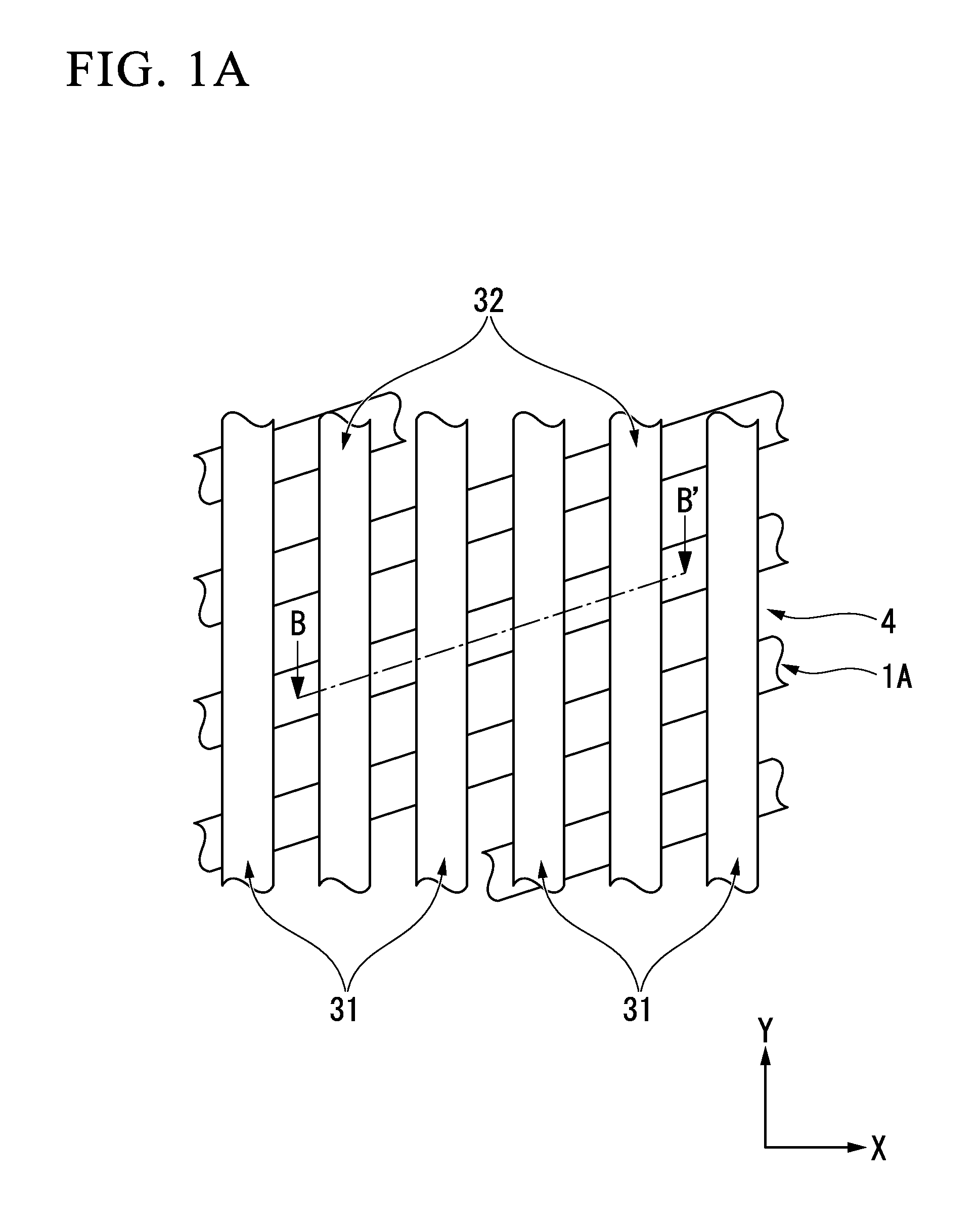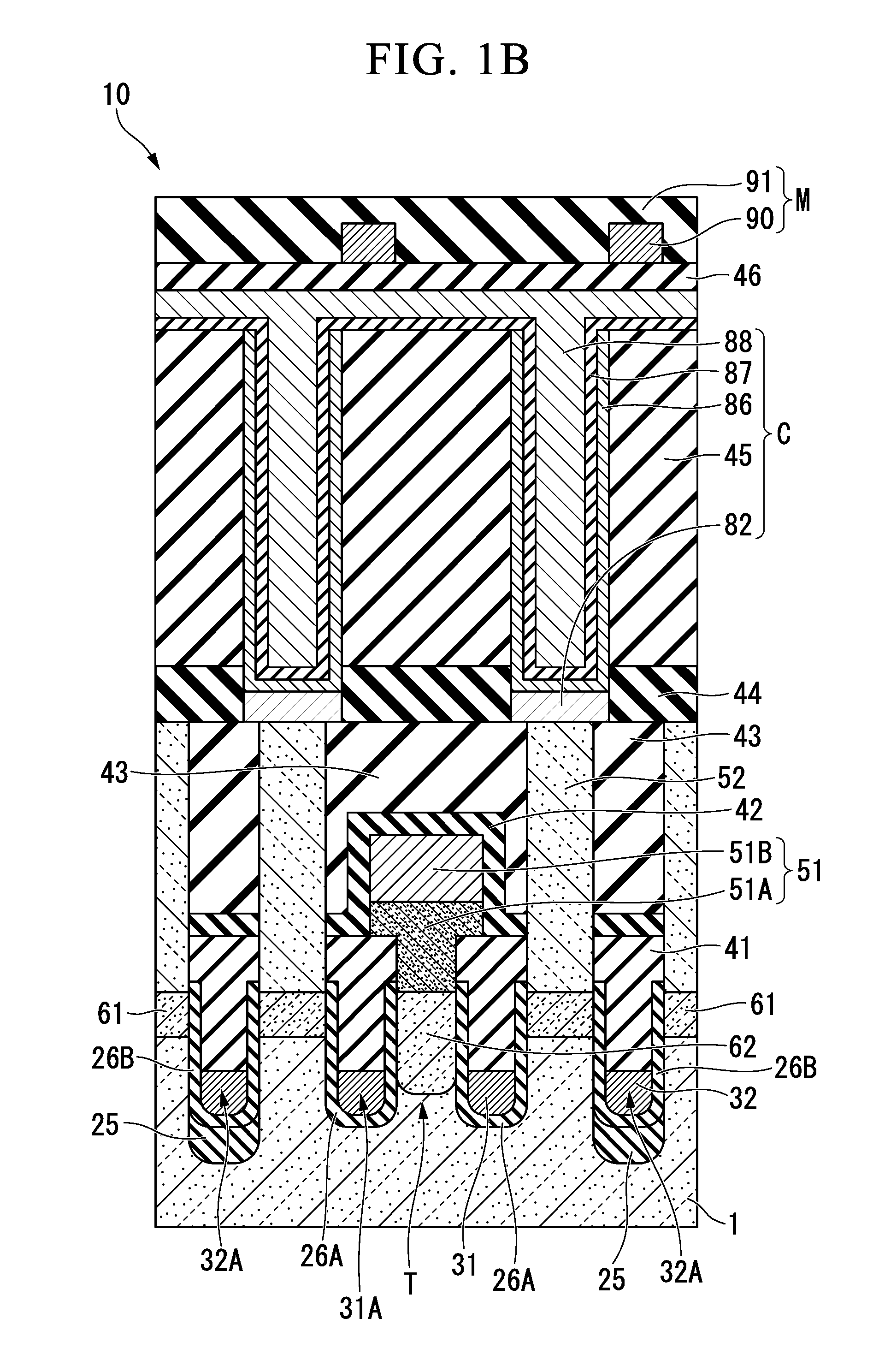Semiconductor device and method of forming the same
a semiconductor and semiconductor technology, applied in the direction of semiconductor devices, electrical appliances, transistors, etc., can solve the problems of increasing contact resistance, difficult patterning process for forming the sti structure, and deteriorating transistor characteristics
- Summary
- Abstract
- Description
- Claims
- Application Information
AI Technical Summary
Benefits of technology
Problems solved by technology
Method used
Image
Examples
first embodiment
[0098]As shown in FIGS. 1A and 1B, a structure of a DRAM 10 which is obtained by applying a semiconductor device of the first embodiment will be explained. FIG. 1A is a fragmentary plan view illustrating a semiconductor device including a memory cell in accordance with a first preferred embodiment of the present invention. FIG. 1B is a fragmentary cross-sectional elevation view, taken along a B-B′ line of FIG. 1A, illustrating the semiconductor device including the memory cell in accordance with the first preferred embodiment of the present invention. In order to easily recognize parts of the semiconductor device, some elements are omitted in FIGS. 1A and 1B.
[0099]According to the present embodiment, the semiconductor device may include, but is not limited to, a plurality of active regions 1A, isolation regions 4, first isolation trenches 32A, gate trenches 31A, an insulating film 25, a gate insulating film 26A, impurity diffusion regions 61, an impurity diffusion region 62, an isol...
second embodiment
[0209]A semiconductor device according to the second embodiment will be described.
[0210]FIG. 24 is a fragmentary cross-sectional elevation view illustrating a semiconductor device including a memory cell in accordance with the second preferred embodiment of the present invention. In FIG. 24, the same parts as those in the first embodiment are denoted by the same reference numerals.
[0211]A semiconductor device 110 according to the present embodiment includes a gate electrode 131 which is a lamination electrode of an upper electrode 131B and a lower electrode 131A as shown in FIG. 24. The semiconductor device 110 includes an isolation electrode 132 which is a lamination electrode of an upper electrode 132B and a lower electrode 132A.
[0212]The upper electrode 131B includes a gate electrode material having a different work function from that of a gate electrode material included in the lower electrodes 131A. The upper electrode 132B includes a gate electrode material having a different ...
third embodiment
[0235]A semiconductor device according to the third embodiment will be described.
[0236]In order to electrically isolate the adjacent transistors, only the threshold voltage of the isolation electrode should be sufficiently higher than the threshold voltage of the gate electrodes of the adjacent transistors. A method for making the threshold voltage of the isolation electrode higher is not limited to increasing the thickness of the insulating film formed below the isolation electrode as shown in the first embodiment.
[0237]According to the present embodiment, a first impurity ion may be selectively implanted into a region 125 below the isolation electrode 32, which is a channel region, as shown in FIG. 28. A second impurity ion may be selectively implanted into a region 126 below the gate electrode 31, which is a channel region, as shown in FIG. 29.
[0238]FIG. 28 is a fragmentary cross-sectional elevation view illustrating the semiconductor device including a memory cell in accordance ...
PUM
 Login to View More
Login to View More Abstract
Description
Claims
Application Information
 Login to View More
Login to View More - R&D
- Intellectual Property
- Life Sciences
- Materials
- Tech Scout
- Unparalleled Data Quality
- Higher Quality Content
- 60% Fewer Hallucinations
Browse by: Latest US Patents, China's latest patents, Technical Efficacy Thesaurus, Application Domain, Technology Topic, Popular Technical Reports.
© 2025 PatSnap. All rights reserved.Legal|Privacy policy|Modern Slavery Act Transparency Statement|Sitemap|About US| Contact US: help@patsnap.com



